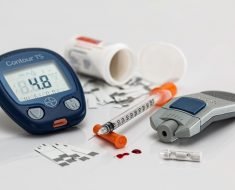As there is currently no successful treatment for individuals with Tay-Sachs disease, there is a need for significant research into therapy techniques that could be useful in the treatment for the disease.
Among the most promising research at this point in time is enzyme replacement therapy, the Jacob sheep model, substrate reduction therapy and the increasing the activity of β-hexosaminidase A.
Enzyme Replacement Therapy
Enzyme replacement therapy (ERT) has been considered as a treatment technique for Tay-Sachs disease and other lysosomal storage disorders.
The treatment aim would be to provide a replacement of the HEXA enzyme that can play the role of the non-functional enzyme of individuals with the disease. However, this process is limited by the physical size of the enzyme, which appears to be too large to traverse the blood-brain barrier as necessary.
Some research has investigated the possibility of administering the HEXA enzyme directly into the cerebrospinal fluid to surpass this issue. However, current research has not been able to show the successful uptake of the enzyme, even with it is administered directly to the central nervous system.
To date, this research approach has been futile but current researchers continue to examine the mechanism and consider administration techniques of the enzyme that could be effective.
Jacob Sheep Model
A rare breed of sheep, known as Jacob sheep, has been used as a model in the research of Tay-Sachs disease, due to their susceptibility to the disease. The pathophysiology and the specific gene mutation of the disease are virtually identical in humans and the sheep, which advocates for the use of the animals as a research model.
Of particular note, research has discovered a certain mutation in the HEXA cDNA of sheep with Tay-Sachs disease, known as G444R, a missense mutation. This involves a change of nucleotide at exon 11, leading to the splicing of the exon before it can be transcribed.
Although this find is yet to provide a treatment for Tay-Sachs disease, it is a promising lead that is being investigated further in clinical trials of gene therapy that may lead to future treatment options.
Substrate Reduction Therapy
Substrate reduction therapy is a technique that involves the use of enzymes to increase the catabolism of the GM2 gangliosides in the central nervous system, substituting the role of the missing Hex-A enzyme. The aim of treatment is to prevent the accumulation of the lipids and prevent the symptoms and progression of the disease.
Sialidase is one enzyme that has been considered in this therapy, which enables the bypass of the genetic defect and the healthy metabolism of GM2 gangliosides to occur. Although this could be a promising treatment for Tay-Sachs disease, it is yet to be developed into a pharmacological form that is safe and effective.
Miglustat is also being investigated as a possible treatment, which works with an antagonistic effect on the glucosylceramide synthase enzyme. This enzyme is important in the synthesis of GM2 gangliosides and could, therefore, help in the treatment of the disease.
β-hexosaminidase A activity
Another research approach has been to increase the activity of the HEXA enzyme, such that the deficiency that characterizes the disease is less significant.
This is primarily considered an option for late onset Tay-Sachs disease, however, as patients with infantile Tay-Sachs disease tend to lack the enzyme completely and would not benefit from an increase in the spectrum of activity.
Pyrimethamine is a drug that has shown some activity in this area but the overall efficacy is not high, as the activity of β-hexosaminidase A is still much lower than in unaffected populations.
References
- https://www.ncbi.nlm.nih.gov/pmc/articles/PMC3129794/
- https://www.ncbi.nlm.nih.gov/pubmed/20817517
- https://www.ncbi.nlm.nih.gov/pubmed/20817517
- https://www.ncbi.nlm.nih.gov/pubmed/11227045
- https://www.ncbi.nlm.nih.gov/pubmed/11227045
Further Reading
- All Tay-Sachs Disease Content
- What is Tay-Sachs Disease?
- Tay-Sachs Disease Pathophysiology
- Tay-Sachs Disease Diagnosis
- Tay-Sachs Disease Prevention
Last Updated: Aug 23, 2018

Written by
Yolanda Smith
Yolanda graduated with a Bachelor of Pharmacy at the University of South Australia and has experience working in both Australia and Italy. She is passionate about how medicine, diet and lifestyle affect our health and enjoys helping people understand this. In her spare time she loves to explore the world and learn about new cultures and languages.
Source: Read Full Article





